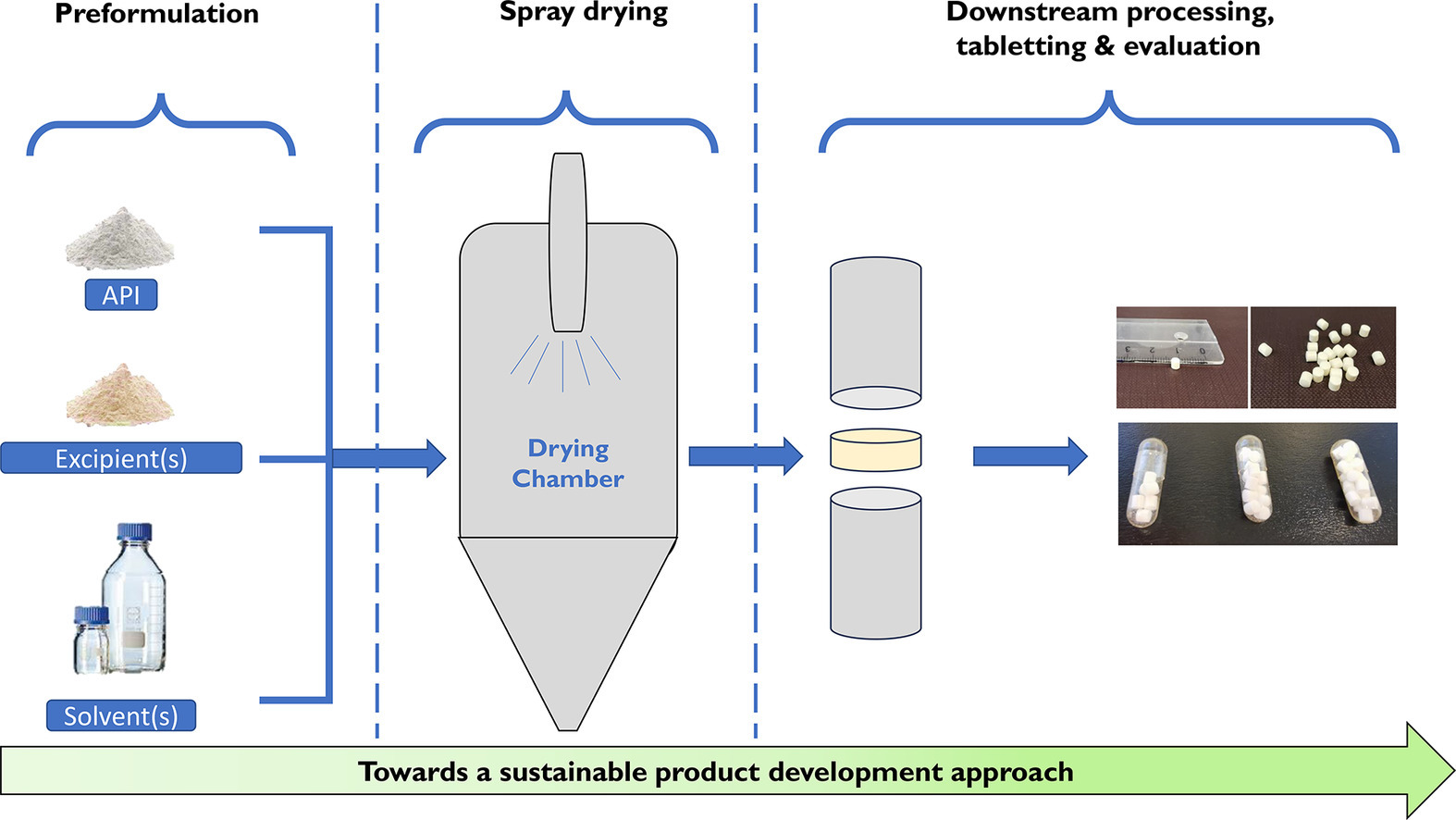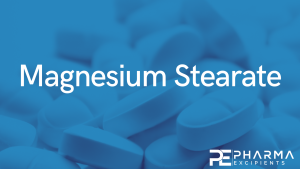The challenge of downstream processing of spray dried amorphous solid dispersions into minitablets designed for the paediatric population – A sustainable product development approach

Poorly water-soluble drugs present a significant challenge in the development of oral solid dosage forms (OSDs). In formulation development the appropriate use of excipients to adjust solubility, and the choice of manufacturing method and pharmaceutical processes to obtain a dosage form to meet the needs of the patient group, is crucial. Preparing an amorphous solid dispersion (ASD) is a well-established method for solubility enhancement, and spray drying (SD) a common manufacturing method.
Highlights
- Sustainable OSD design through the development of a versatile formulation to serve the needs of diverse patient populations
- Manufacturing minitablets of spray-dried amorphous dispersions is a challenge.
- Formulation development is required to improve flow into a small die orifice.
- Materials and manufacturing steps are minimised for efficiency and stability.
- A simple two-filler formulation was successfully developed for direct compression.
However, the poor flowability of spray dried materials poses a significant challenge for downstream processing. Promoting sustainability in OSD development involves embracing a versatile formulation design, which enables a broader spectrum of patients to use the product, as opposed to altering existing dosage forms retrospectively. The objective of the current study was to develop a formulation of spray dried indomethacin ASD suited to the production, by direct compression, of instant release paediatric minitablets. Excipients evaluated were PVP or HPMCAS in solid dispersions at the preformulation phase, and MCC and lactose as a filler in direct compression.
From the studied formulations, a 3:1 ratio blend of Vivapur 200/Pharmatose 200M (MCC/lactose) with 0.5 % (w/w) magnesium stearate was found to be the most promising in tableting, and minitablets containing a 6.22 % content of spray-dried ASD of indomethacin/PVP K 29-32 could be obtained with desired tablet hardness and pharmaceutical quality, complying with tests of weight variation and fast disintegration in an aqueous environment. As a case example, this study provides a good foundation for further studies in harnessing a sustainable approach to the development of pharmaceutical formulations that can appropriately serve different patient sub-populations.
Download the full article as PDF here: The challenge of downstream processing of spray dried amorphous solid dispersions into minitablets designed for the paediatric population
or read it here
Materials
The API, indomethacin (IND) (lot: D3NIJ) was purchased from Tokyo Chemical Industries (Tokyo Chemical Industries Ltd., Eschborn, Germany). The polymers, hydroxypropyl methylcellulose acetate succinate (HPMCAS MF (lot: 60F_71001), HPMCAS HF (lot: 65F_81003)) and polyvinylpyrrolidone (PVP K 29-32, (lot: 2348764)) were obtained from Ashland (Ashland Industries Europe, Meath, Ireland). Several grades of microcrystalline cellulose (MCC), brand name Vivapur®, was obtained from JRS Pharma (JRS Pharma GmbH & Co. KG, Rosenberg, Germany) and several grades of milled lactose monohydrate, brand name Pharmatose®, was purchased from DFE pharma (DFE pharma, Goch, Germany). Magnesium stearate and transparent hard gelatin capsules size 0 were obtained from University Pharmacy, Helsinki, Finland. Powdered beetroot (Beetroot Juice P-WS) was purchased from Sensient Food Colors (Sensient Food Colors Germany GmbH, Geesthacht, Germany). Ethanol was obtained from Scharlau (Scharlab, S.L, Spain), and in-house deionized water was used.
Anja Autzen Virtanen, Monika Myślińska, Anne Marie Healy, Eoin Power, Atif Madi, Mia Sivén, The challenge of downstream processing of spray dried amorphous solid dispersions into minitablets designed for the paediatric population – A sustainable product development approach, European Journal of Pharmaceutical Sciences, 2024, 106752, ISSN 0928-0987, https://doi.org/10.1016/j.ejps.2024.106752.
Read also our introduction article on Magnesium Stearate here:


